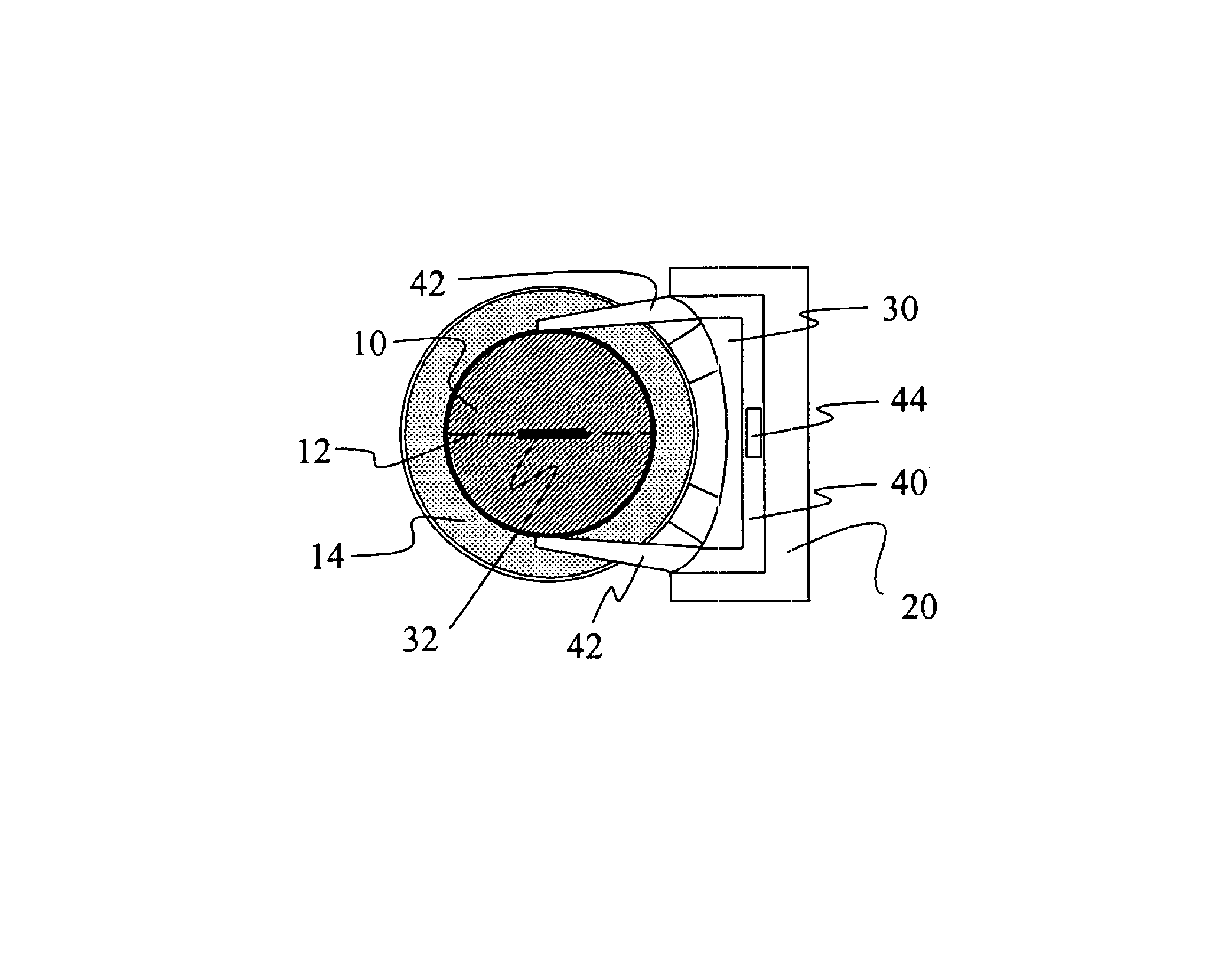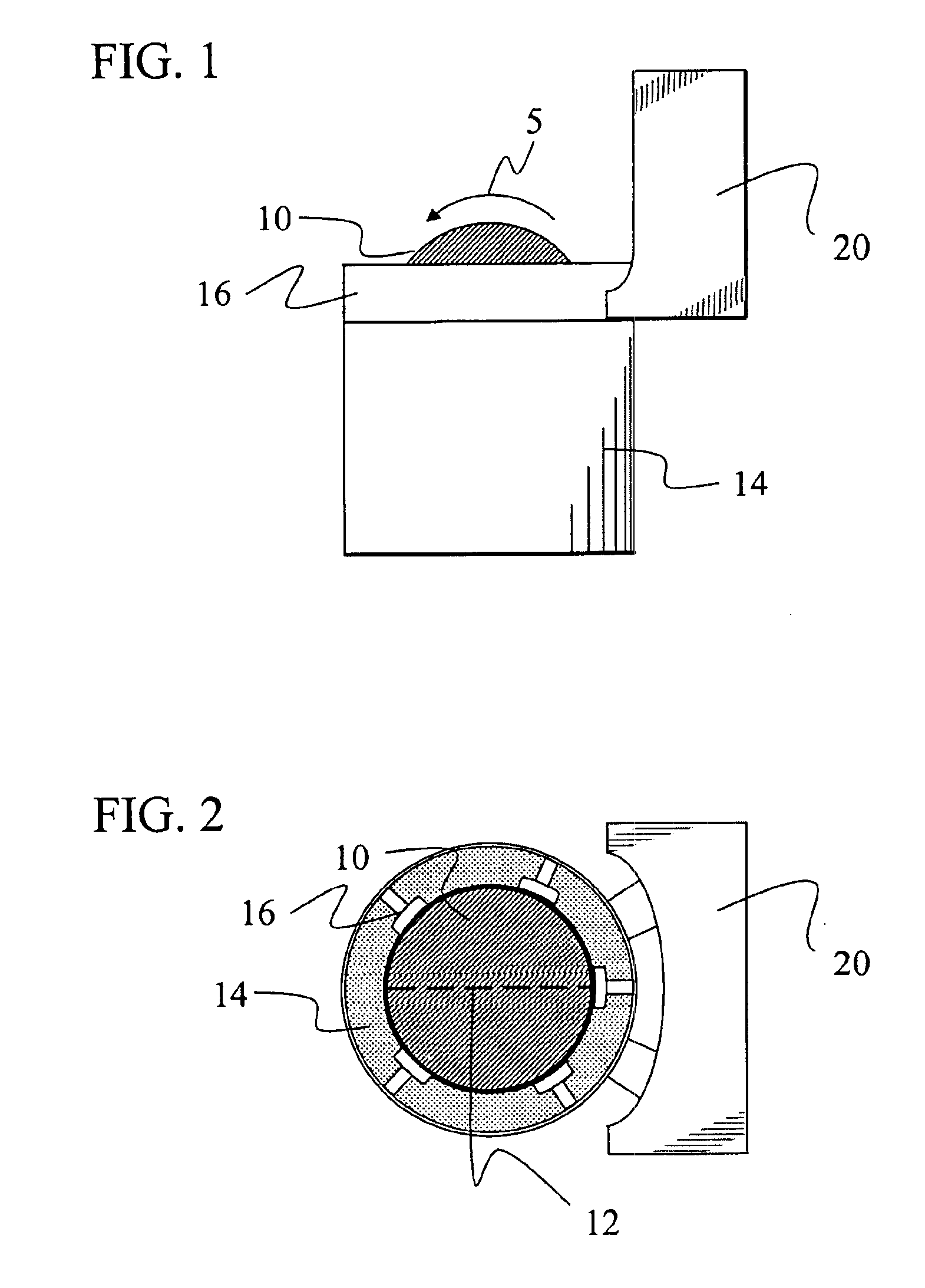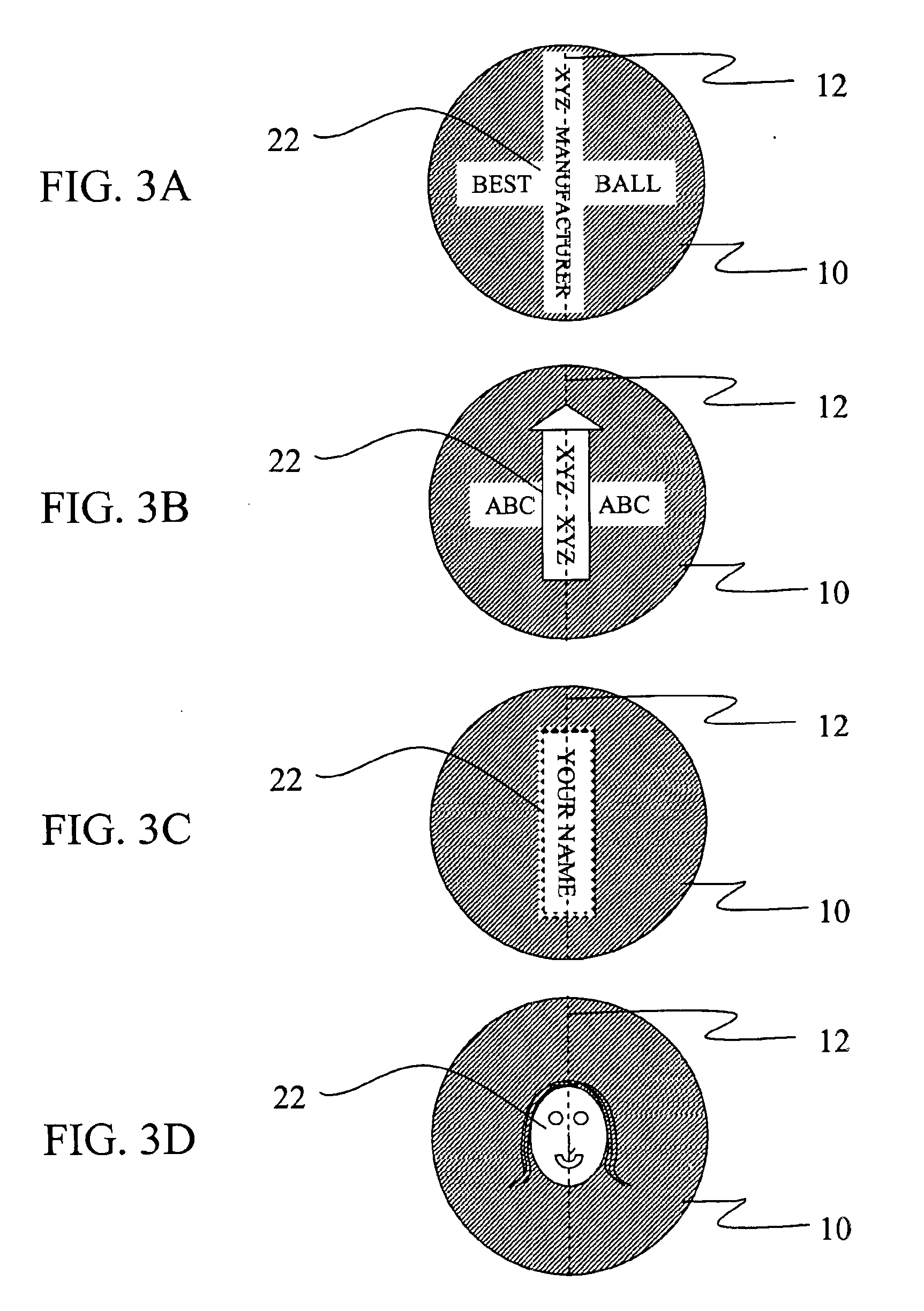Method and device for marking golf balls
a golf ball and marking technology, applied in the field of golf balls, can solve the problems of not being able to immediately determine the center of mass by sight, not being able to locate at the center of the sphere, and generally not being accurate,
- Summary
- Abstract
- Description
- Claims
- Application Information
AI Technical Summary
Benefits of technology
Problems solved by technology
Method used
Image
Examples
Embodiment Construction
Referring now to the figures of the drawing, the figures constitute a part of this specification and illustrate exemplary embodiments of the invention. It is to be understood that in some instances various aspects of the invention may be shown exaggerated or enlarged to facilitate an understanding of the invention.
FIG. 1 is a side view of a dynamic axis locating device with a braking mechanism and marking device according to one embodiment of the invention. In one embodiment, the dynamic axis locating device 14 is a spinning device, for example, that utilizes a system to spin a ball 10 (e.g. a golf ball) in the direction shown by arrow 5 at high speed in order to locate the ball's dynamic axis. The ball is then quickly stopped in place by a braking mechanism 16 and held in a position such that the newly located dynamic axis can be marked by a putting directional indicator (PDI) marking device 20. In a preferred embodiment, the PDI mark is a permanent one, but alternatively, a PDI ma...
PUM
 Login to View More
Login to View More Abstract
Description
Claims
Application Information
 Login to View More
Login to View More - R&D
- Intellectual Property
- Life Sciences
- Materials
- Tech Scout
- Unparalleled Data Quality
- Higher Quality Content
- 60% Fewer Hallucinations
Browse by: Latest US Patents, China's latest patents, Technical Efficacy Thesaurus, Application Domain, Technology Topic, Popular Technical Reports.
© 2025 PatSnap. All rights reserved.Legal|Privacy policy|Modern Slavery Act Transparency Statement|Sitemap|About US| Contact US: help@patsnap.com



